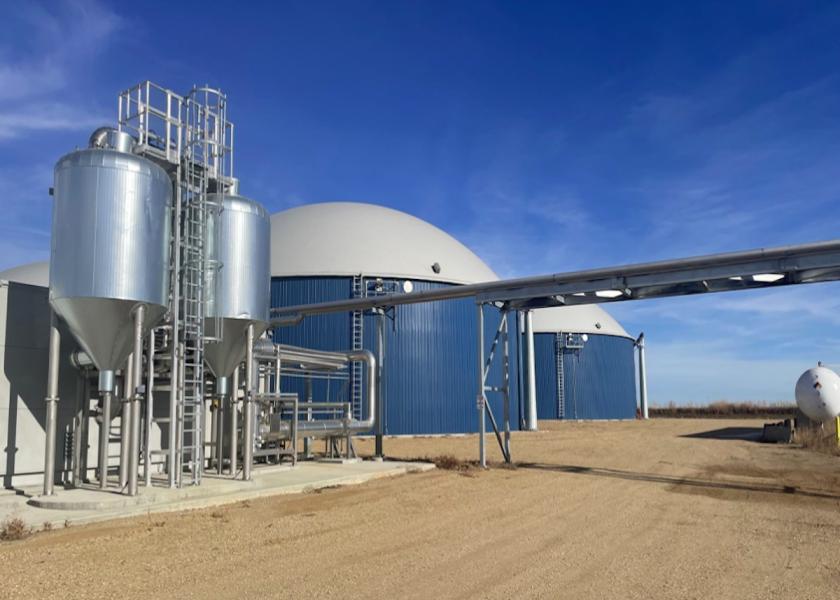South Dakota Dairy Expected to Supply 1.66 Million Gallons of RNG with New Production Facility

With the dairy industry working towards the common goal of becoming carbon neutral by 2050, more and more producers are looking for ways to increase the sustainability efforts on their farms. One method some operations are capitalizing on is the ability to produce renewable natural gas (RNG) by the means of a methane digester.
Drumgoon Dairy, a 6,500-cow operation in Lake Norden, S.D., has done just that after recently completing a new RNG production facility in partnership with Clean Energy Fuels Corp. Finishing the project in December of last year, the facility has since begun injecting ultra-low carbon RNG into the interstate natural gas pipeline system. According to a company press release, Drumgoon Dairy is expected to supply 1.66 million gallons of negative carbon-intensity RNG annually to the transportation market when at full capacity.
“Completion of the RNG project at Drumgoon Dairy, along with several others that are right behind it, is already making a contribution to controlling harmful greenhouse gas emissions,” says Clay Corbus, senior vice president of renewables at Clean Energy. “Being a multi-generational operation, Drumgoon’s owners are always thinking about the future, whether it’s bringing in the latest technology to better track and monitor their cows or transforming their herd to antibiotic-free. Adding a RNG digester that captures the methane produced by Drumgoon’s cows and turning it into a clean fuel is the ultimate recycling project.”
How It’s Made
While dairy cows are known for their ability to make milk, they’re also scrutinized for their ability to produce methane, a potent greenhouse gas (GHG) emission. According to the Environmental Protection Agency, agriculture accounts for nearly 10% of U.S. GHG emissions. However, the dairy industry plays a big role in being part of a global climate solution.
“Renewable natural gas is chemically the same as the natural gas you might get in your stove, but what makes it renewable is that it is sourced from landfills or dairy farms,” says Will Flanagan, vice president of strategic development at Clean Energy. “What we’re doing is gathering manure and putting it in a digester, which captures the raw methane, or biogas, that would otherwise be going into the atmosphere. Then we pipe that raw biogas to an on-site gas processing plant where we clean it up by taking out the unwanted constituents.”
Once the methane has been converted into RNG, it is injected into a local natural gas pipeline and distributed to one of Clean Energy’s 540 fueling stations.
A Dynamic Partnership
The Drumgoon Dairy $38 million RNG digester project was financed through Clean Energy’s joint venture with bp, developed with Dynamic Renewables, and is one of several RNG projects the three companies have partnered to build at dairies throughout the Midwest. Clean Energy is purchasing RNG from approximately 100 dairies across the U.S. and all the RNG produced at Drumgoon will be available at Clean Energy’s fueling infrastructure.
Clean Energy’s sales of RNG into the transportation market for the first nine months of 2023 grew 17% over the same period of 2022, and with customers such as UPS, Republic Services, LA Metro, Knight Swift, Amazon and others, the demand of the ultra-clean fuel is expected to expand.
For more on sustainability, read:
- From Farm to Fuel: Dairy's Role in Supplying Renewable Natural Gas
- Understanding Carbon in Manure Management
- On the Lookout for Opportunity
- New Efficiencies Bring Sustainability Benefits to Clearview Dairy
- A Deep Dive into Sustainable Innovation
- The Basics of Carbon Credits







